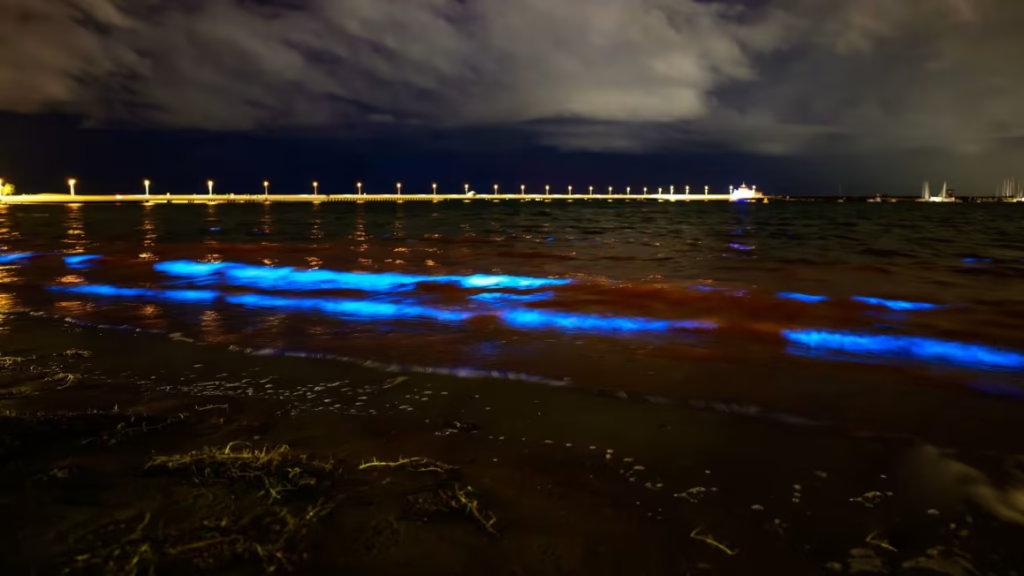Melbourne — Visitors to St Kilda beach were stunned this week as waves lit up with brilliant electric-blue light, a dazzling display created by bioluminescent algae.
The phenomenon, caused by Noctiluca scintillans—often called “sea sparkles”—occurs when the algae emit light in response to movement. During the day, the blooms appear as pinkish-orange patches in the water, but after dark, the shoreline transforms into a surreal glowing scene.
Marine biologists noted that while the sight is breathtaking, it also signals environmental shifts. The algae thrive in warm, nutrient-rich waters. When they bloom in large numbers, they can disrupt ecosystems by raising ammonia levels and reducing oxygen, threatening fish and other marine life.
Scientists say these glowing events are appearing more often and further south than in past decades, linking the trend to warming seas and changes in ocean circulation. For Melbourne residents, the rare spectacle is both a natural wonder and a reminder of how climate change is reshaping marine environments.
Social media quickly filled with photos and videos from beachgoers, many describing the glowing waves as “cosmic” and “once in a lifetime.” Yet experts caution that behind the beauty lies a warning: the ocean’s delicate balance is shifting.


